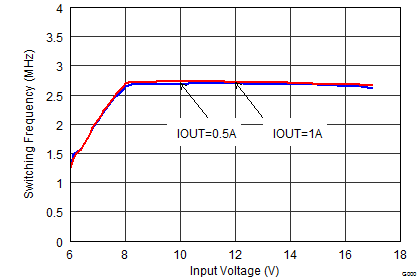ZHCSCG9C May 2014 – July 2019 TPS62150A-Q1 , TPS62152A-Q1 , TPS62153A-Q1
PRODUCTION DATA.
- 1 特性
- 2 应用
- 3 说明
- 4 修订历史记录
- 5 Device Comparison Table
- 6 Pin Configuration and Functions
- 7 Specifications
- 8 Parameter Measurement Information
-
9 Detailed Description
- 9.1 Overview
- 9.2 Functional Block Diagram
- 9.3
Feature Description
- 9.3.1 Pulse Width Modulation (PWM) Operation
- 9.3.2 Power Save Mode Operation
- 9.3.3 100% Duty-Cycle Operation
- 9.3.4 Enable / Shutdown (EN)
- 9.3.5 Soft Start / Tracking (SS/TR)
- 9.3.6 Current Limit And Short Circuit Protection
- 9.3.7 Power Good (PG)
- 9.3.8 Pin-Selectable Output Voltage (DEF)
- 9.3.9 Frequency Selection (FSW)
- 9.3.10 Under Voltage Lockout (UVLO)
- 9.3.11 Thermal Shutdown
- 9.4 Device Functional Modes
-
10Application and Implementation
- 10.1 Application Information
- 10.2
Typical Application
- 10.2.1
TPS62150A-Q1 Point-Of-Load Step Down Converter
- 10.2.1.1 Design Requirements
- 10.2.1.2
Detailed Design Procedure
- 10.2.1.2.1 Custom Design With WEBENCH® Tools
- 10.2.1.2.2 Programming The Output Voltage
- 10.2.1.2.3 External Component Selection
- 10.2.1.2.4 Inductor Selection
- 10.2.1.2.5 Output Capacitor
- 10.2.1.2.6 Input Capacitor
- 10.2.1.2.7 Soft Start Capacitor
- 10.2.1.2.8 Tracking Function
- 10.2.1.2.9 Output Filter And Loop Stability
- 10.2.1.3 Application Curves
- 10.2.2 System Examples
- 10.2.1
TPS62150A-Q1 Point-Of-Load Step Down Converter
- 11Power Supply Recommendations
- 12Layout
- 13器件和文档支持
- 14机械、封装和可订购信息
10.2.1.3 Application Curves
At VIN=12V, VOUT=3.3V and TA=25°C, FSW=Low, (unless otherwise noted)
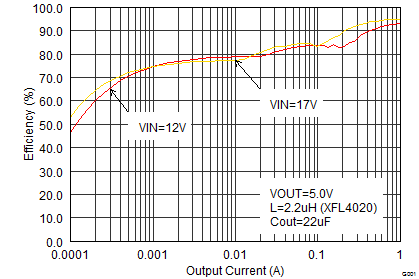
| FSW = Low | ||
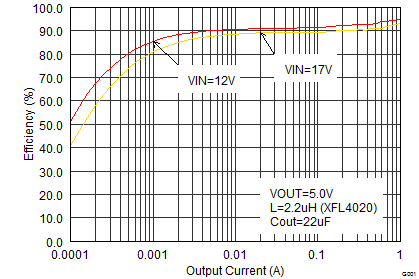
| FSW = High | ||
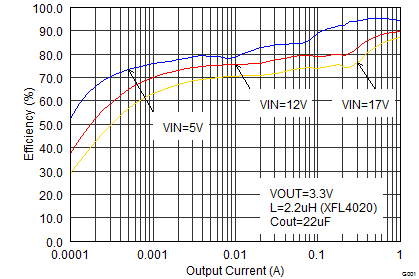
| FSW = Low | ||
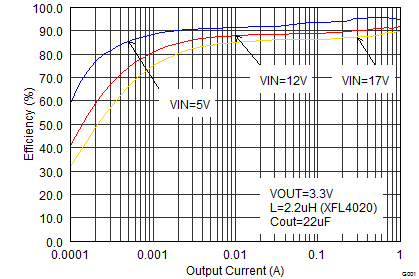
| FSW = High | ||
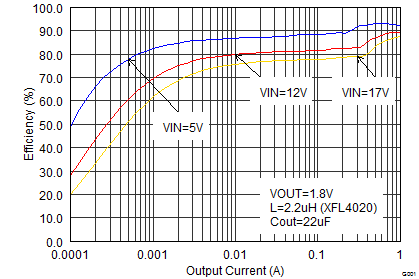
| FSW = High | ||
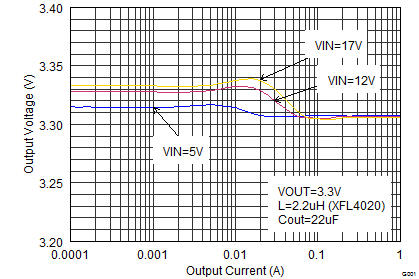
| VOUT = 3.3 V | L = 2.2 µH (XFL4020) | COUT = 22 µF |
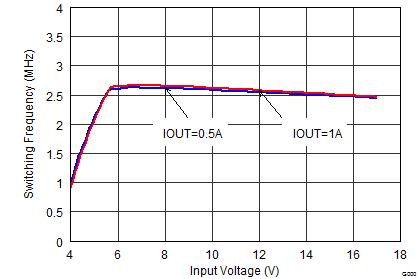
| FSW = Low | VOUT = 3.3 V | |
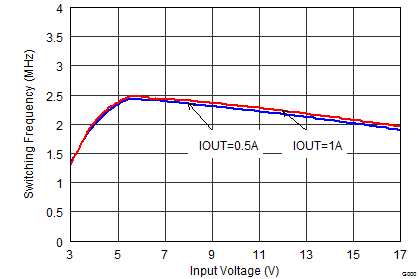
| FSW = Low | VOUT = 1.8 V | |
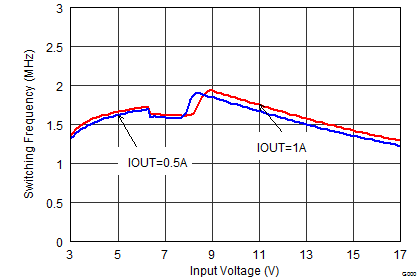
| FSW = Low | VOUT = 1 V | |
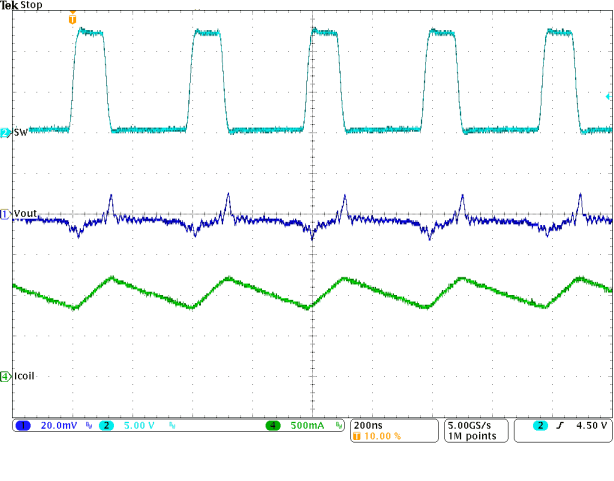 Figure 32. Typical Operation in PWM Mode (IOUT = 1A)
Figure 32. Typical Operation in PWM Mode (IOUT = 1A) 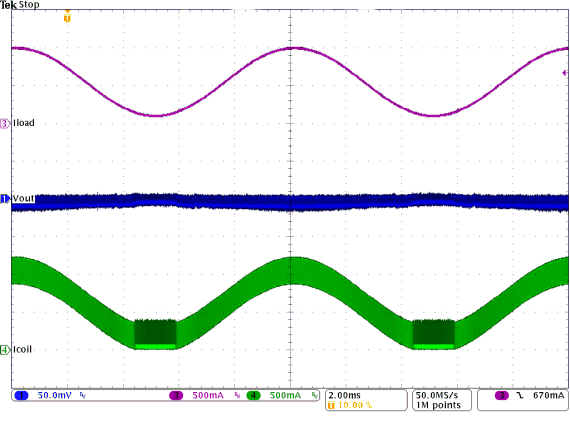 Figure 34. PWM-PSM-Transition
Figure 34. PWM-PSM-Transition 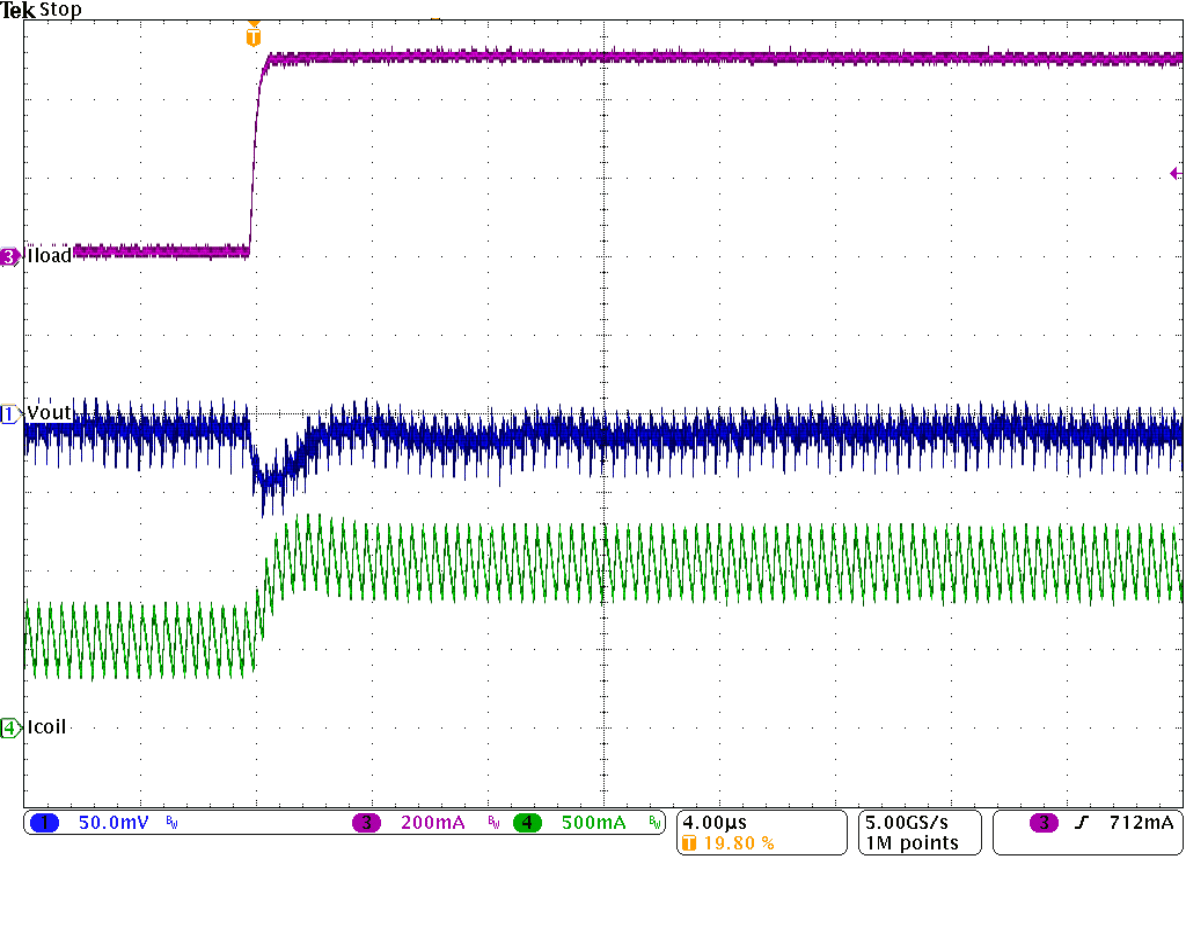 Figure 36. Load Transient Response of Figure 35,
Figure 36. Load Transient Response of Figure 35,
Rising Edge
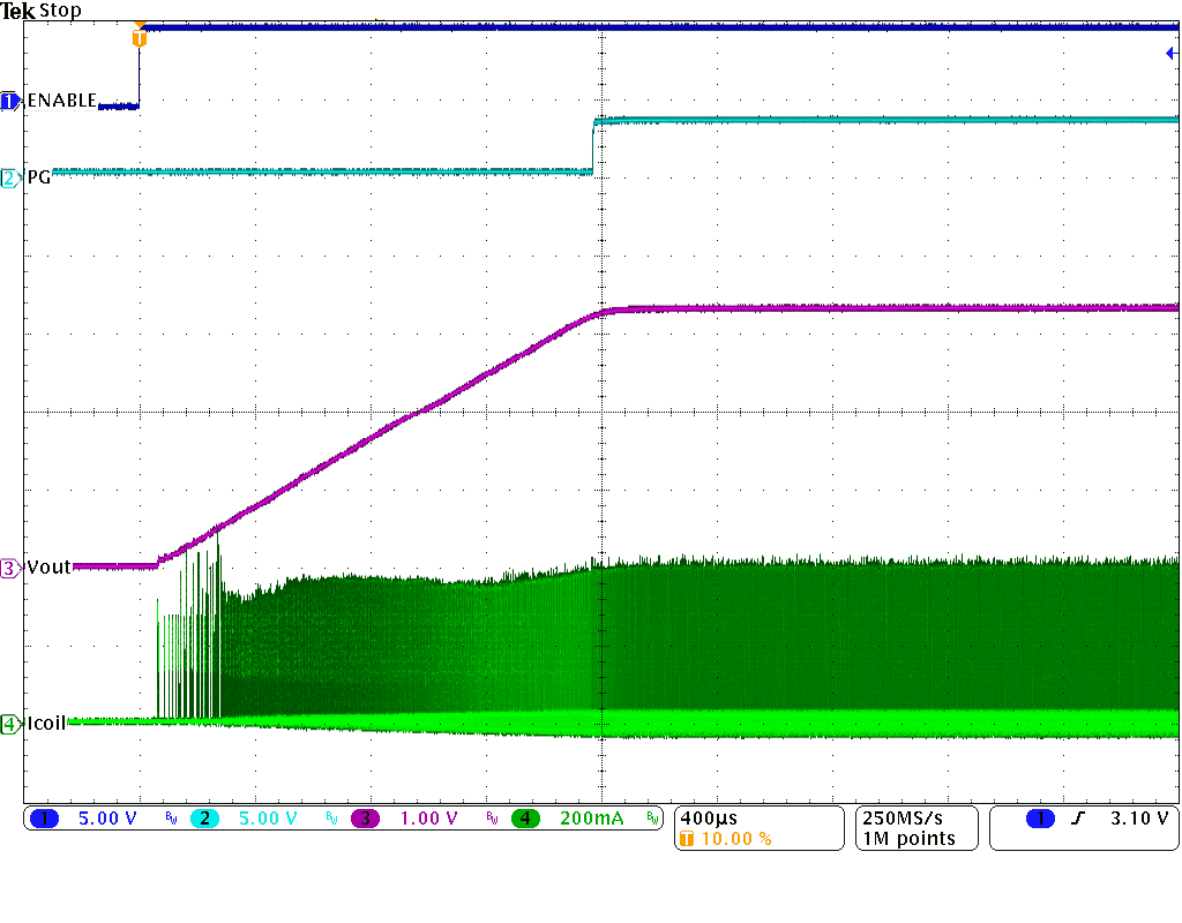 Figure 38. Start Up Into 100mA
Figure 38. Start Up Into 100mA 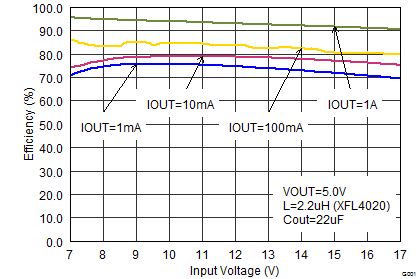
| FSW = Low | ||
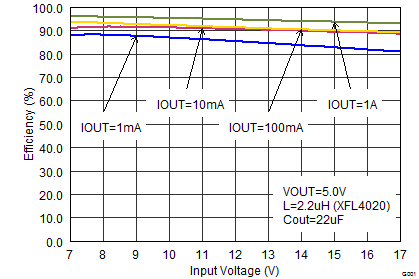
| FSW = High | ||
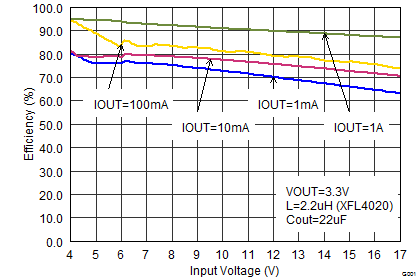
| FSW = Low | ||
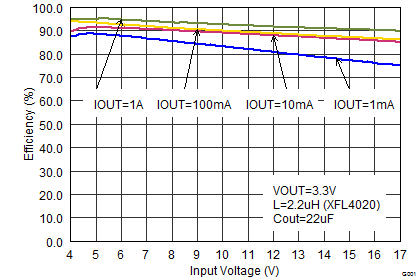
| FSW = High | ||
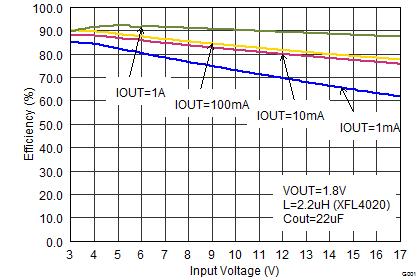
| FSW = High | ||
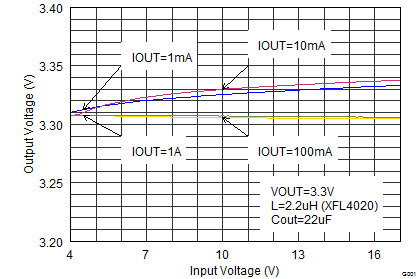
| VOUT = 3.3 V | L = 2.2 µH (XFL4020) | COUT = 22 µF |
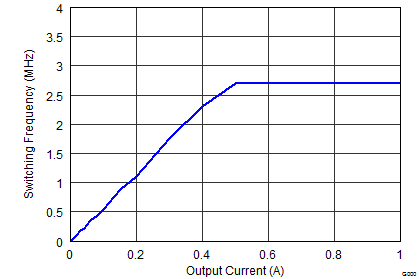
| FSW = Low | VOUT = 5 V | |
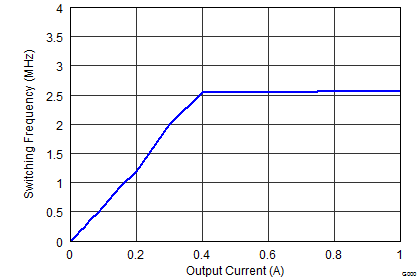
| FSW = Low | VOUT = 3.3 V | |
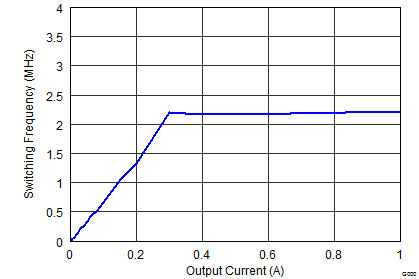
| FSW = Low | VOUT = 1.8 V | |
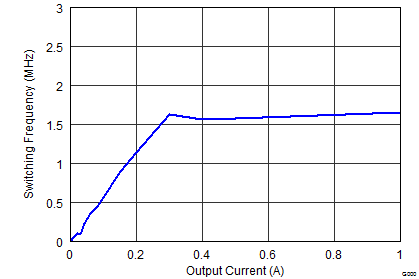
| FSW = Low | VOUT = 1 V | |
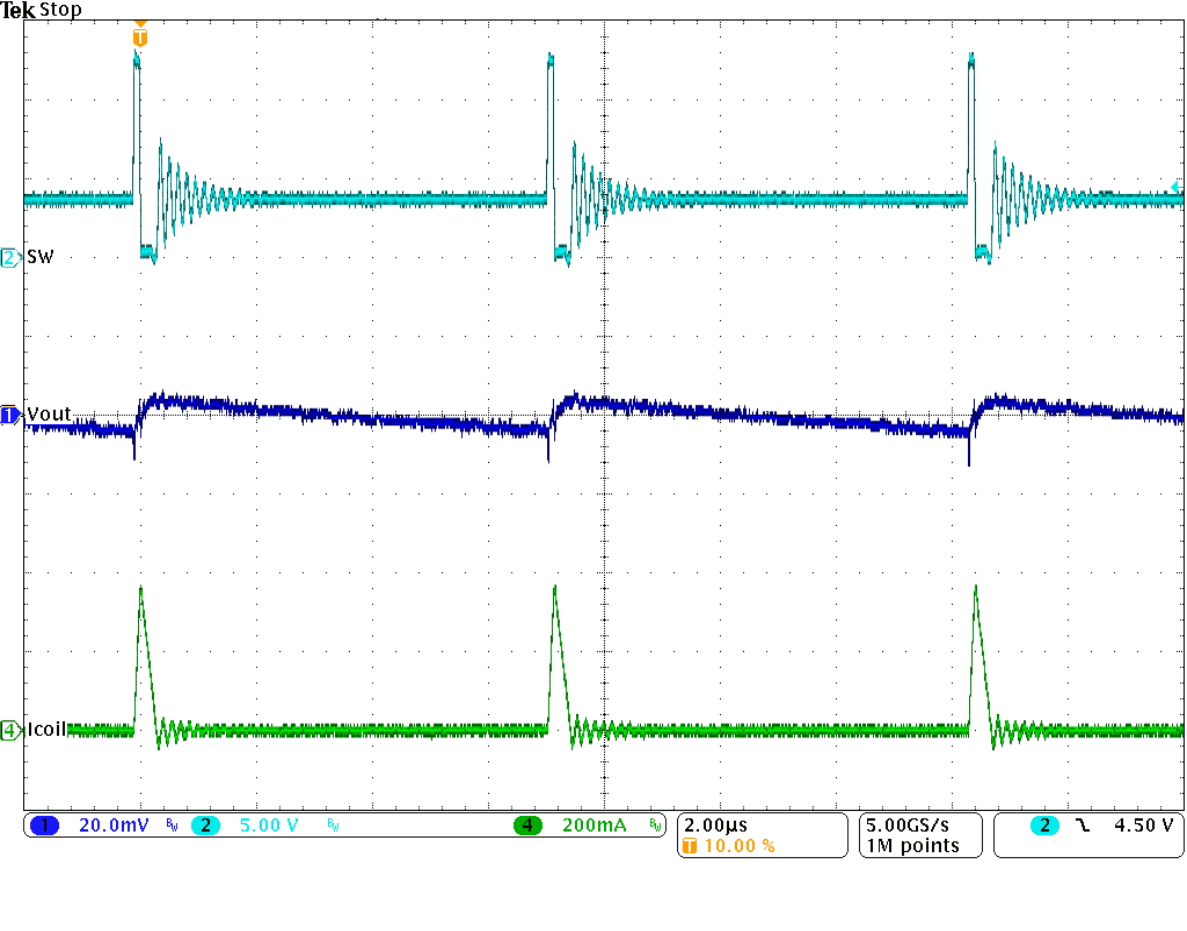 Figure 33. Typical Operation in Power Save Mode (IOUT = 10mA)
Figure 33. Typical Operation in Power Save Mode (IOUT = 10mA) 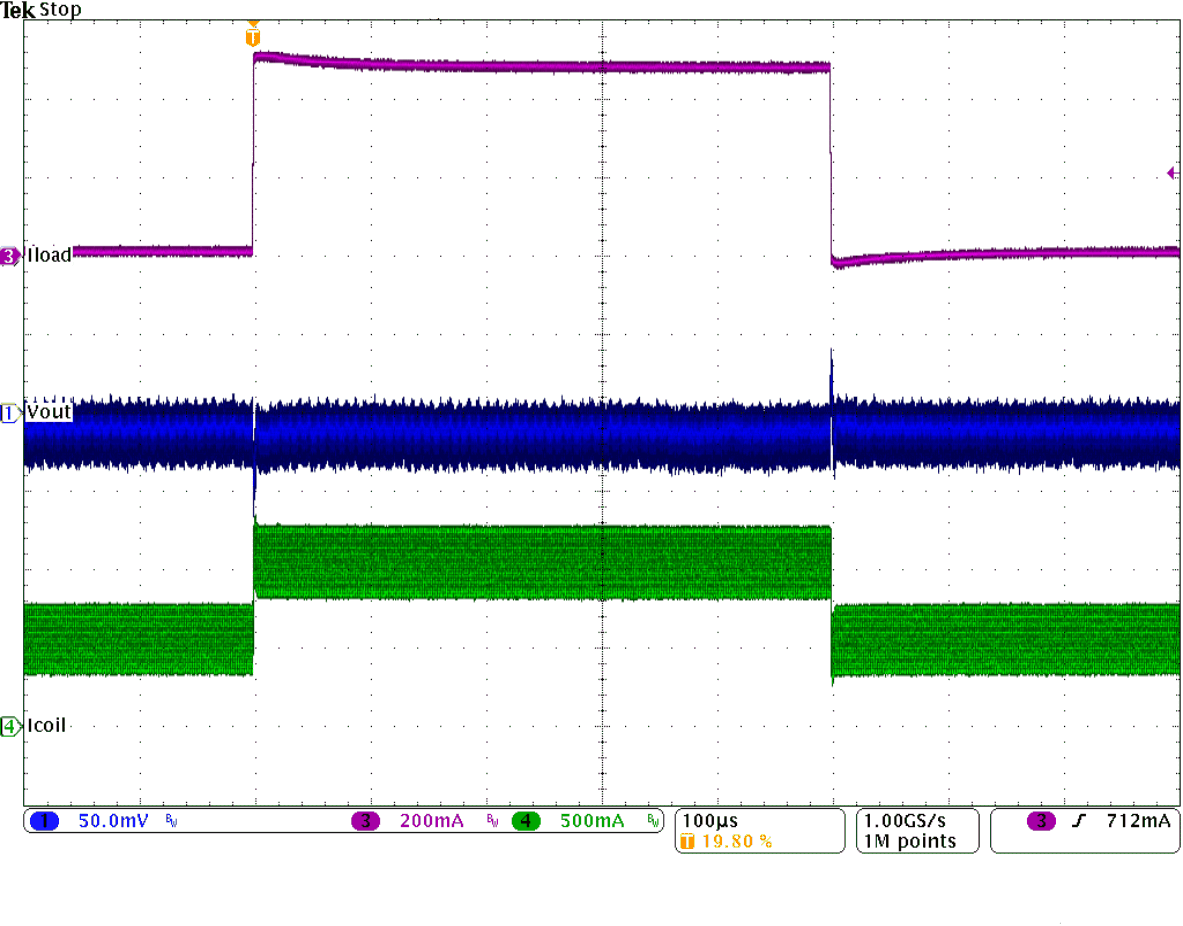 Figure 35. Load Transient Response (0.5 to 1 to 0.5 A)
Figure 35. Load Transient Response (0.5 to 1 to 0.5 A) 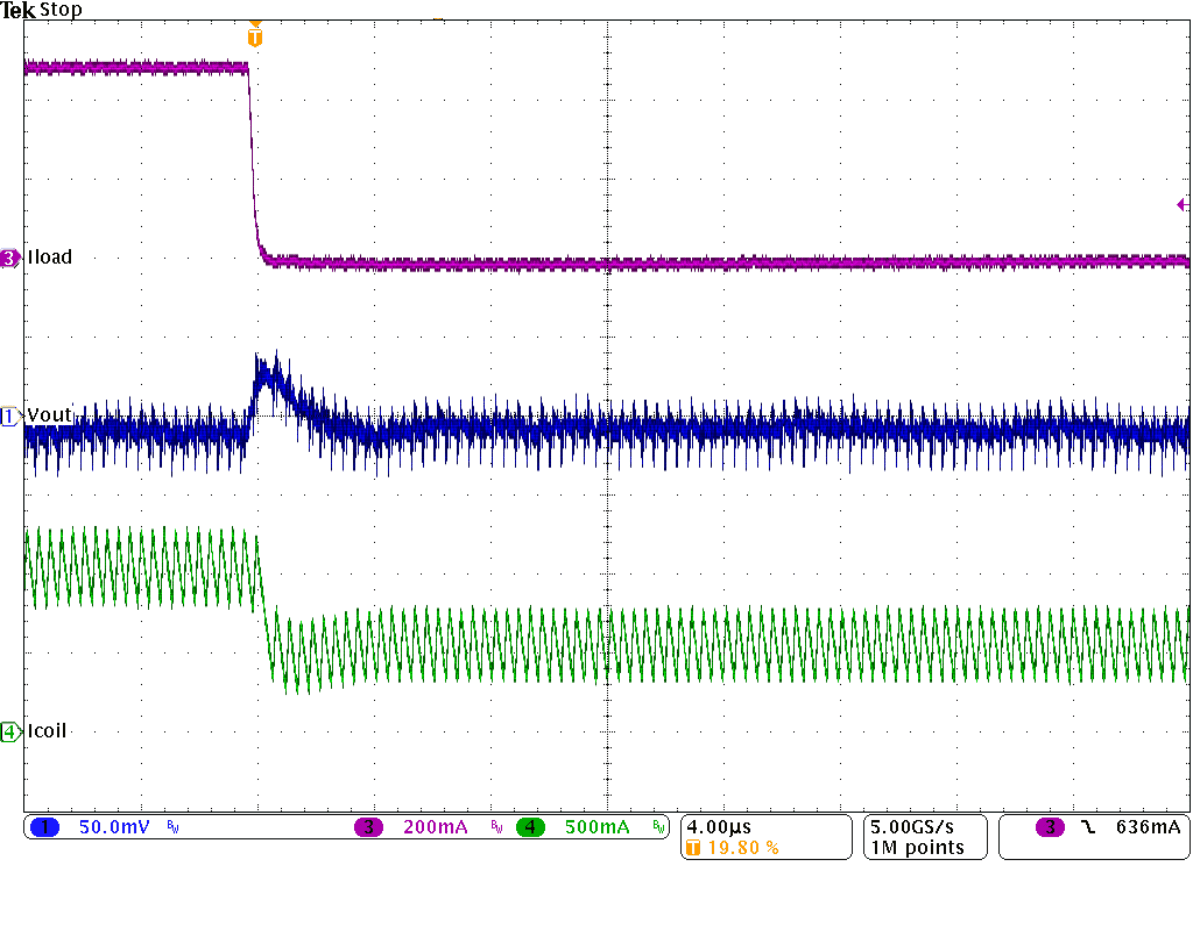 Figure 37. Load Transient Response of Figure 35,
Figure 37. Load Transient Response of Figure 35,
Falling Edge
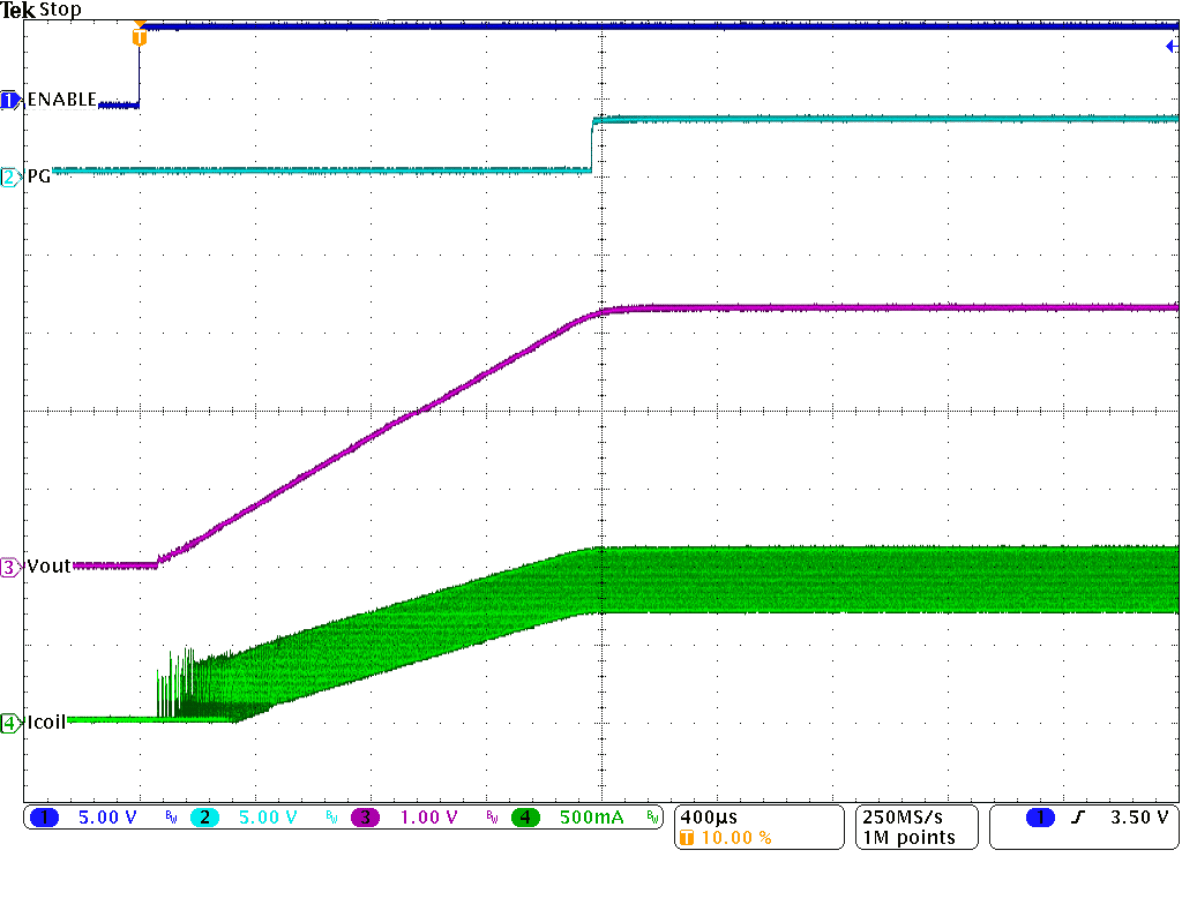 Figure 39. Start Up Into 1A
Figure 39. Start Up Into 1A 